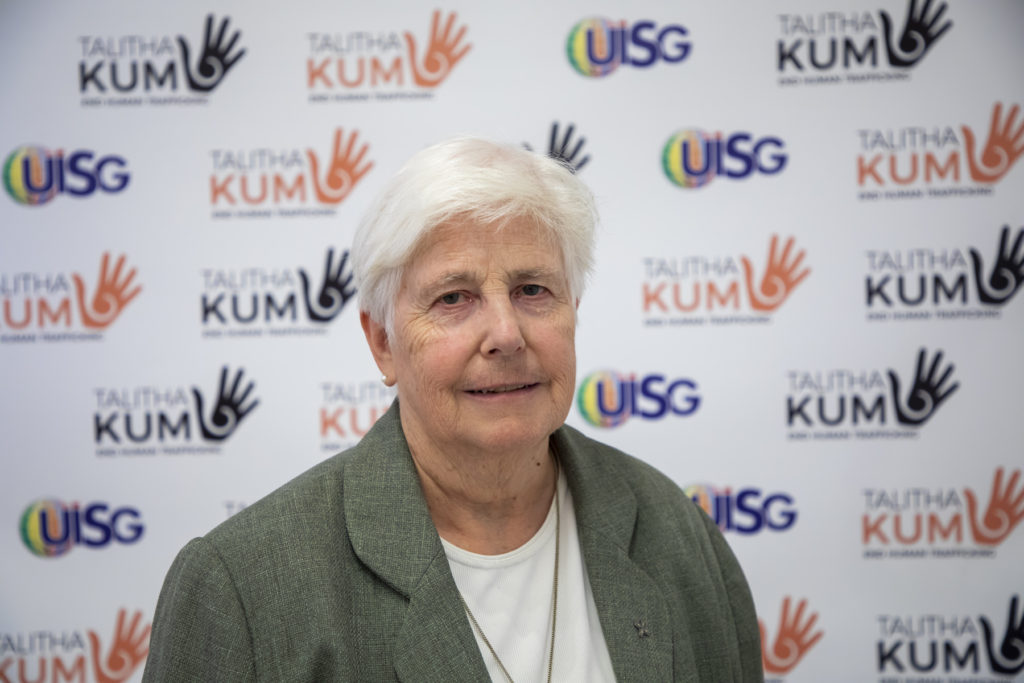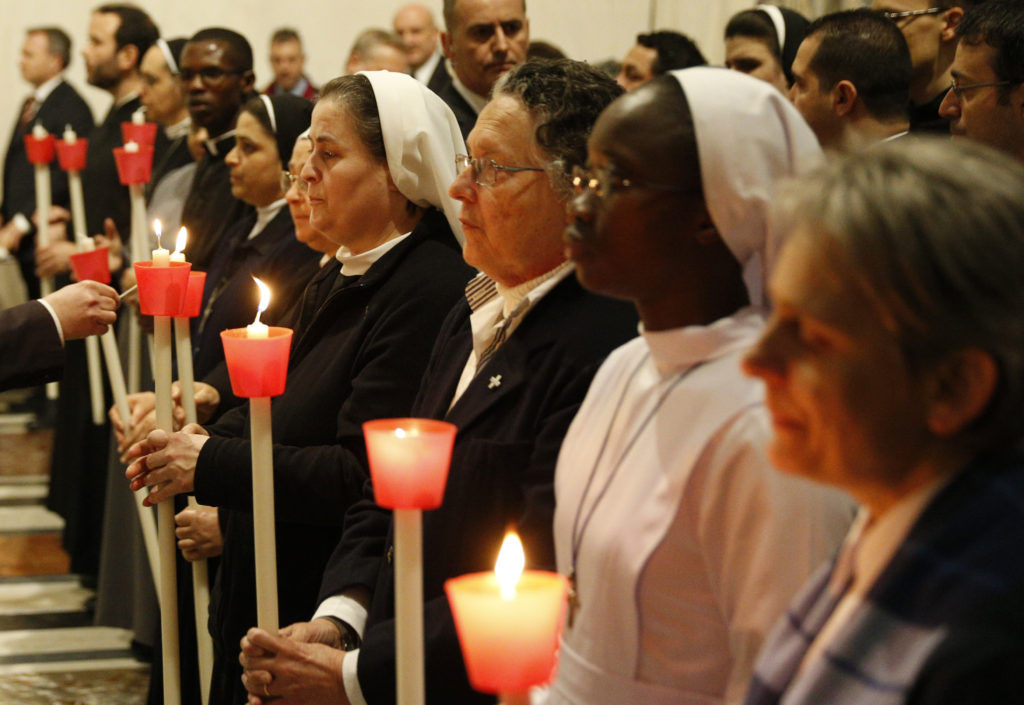VATICAN CITY (CNS) — Loreto Sister Patricia Murray has a perfect view of the dome of St. Peter’s Basilica from her office and, she said, almost every morning she thinks about how she got there.

The answer for the executive secretary of the women’s International Union of Superiors General is that God put her there, her religious community put her there and a huge network of women religious around the globe put her there.
That network related to, but broader than the UISG, an organization of some 2,000 superiors of religious orders of women — is where Sr. Murray sees the “God of surprises” at work.
In an interview Jan. 29, just a few days before the annual celebration Feb. 2 of the World Day for Consecrated Life, she said, “The Holy Spirit is at work in building us as religious women into a global family.”
“There’s something extraordinary happening in terms of inter-congregational collaboration,” she said. “We’re helping and sustaining and carrying one another as religious women.”
For example, she said, in Sicily there is an inter-congregational community of sisters, which the locals refer to as “le suore del mondo,” giving the sense of “sisters from the whole world.”

“On one level, we’re perceived as diminishing,” since global numbers are declining, “but on another level, in growing close to one another, we are mirroring a new reality that the world today needs” to counteract a situation in which people are increasingly divided and focused on protecting what is “theirs,” she said.
“For me, these small communities, inter-congregation communities are the mustard seeds, the leaven of a new way of living,” Sr. Murray said.
According to Vatican statistics released in 2019, there are close to 650,000 women religious in the world; there were more than 720,000 in 2010. Their numbers continue to increase in Africa and Asia, but to decline in the rest of the world.
Obviously, the sisters themselves are aware of the declining numbers and the need to live in a way that shows women, especially young women, the joy of dedicating oneself totally to Christ for life. They, like Sr. Murray, are convinced God still is calling women to consecrated life.
But focusing on the numbers can betray an attitude that sisters are simply a “workforce” for the church, she said.
“Religious life is always meant to be prophetic, so in other words, it’s always meant to be responding to where the greatest need is,” she said. “It calls for discernment, for knowing how we are to be and where we are to be.”
“In the parts of the world where, in a sense, greater numbers are needed because one is helping to build up the local church, in terms of its institutions and so forth, the numbers are there,” she said. “In other parts of the world, where we’re called to be more a leaven or a mustard seed — living among people and nurturing life and being part of the Christian community, and bringing our gifts to the Christian community but also receiving from the gifts of others — then we’re a different kind of presence.”
In Europe and North America, for instance, she said, “God provides many good Catholic laymen and laywomen” who can teach in Catholic schools, so “we sisters are called to move on” to places where there is no one else. So, they work with migrants and refugees, victims of human trafficking, the homeless and people who are lonely or have lost a sense of meaning in their lives.
They also are bringing their voices to decision-making structures in the church.
Sr. Murray has been at the UISG for five years and sees the change. It’s not fast, but “space is being created in the church and, especially, at the Vatican for the voice of women to be heard” at synods of bishops and other meetings and in the workings of a variety of Roman Curia offices.
They are “very welcome signs of change,” she said, and it is not just about getting women at the table, but recognizing and benefiting from the work, experiences, expertise and talents of Catholic women, especially women religious.
In the past couple of years, many women’s religious orders have had to come to terms with the church’s abuse scandal, both with sisters as victims of priests, but also with allegations within women’s orders of the abuse of power and mistreatment of sisters.
The UISG has been providing training not only on implementing programs for preventing abuse, but instructing superiors on the canonical procedures to follow when accusations are made, helping orders improve their formation programs, especially in the areas of sexuality and affectivity, and identifying experts in every part of the world who can help orders with training or with investigating allegations.
The World Day for Consecrated Life is celebrated each year on the feast of the Presentation, marking the occasion 40 days after Jesus’ birth when Mary and Joseph present him in the Temple in Jerusalem. There, the elderly Simeon and Anna, who had been praying and fasting in the Temple, recognize Jesus as the Messiah.
Sr. Murray said it is a fitting time to honor consecrated men and women because, just as for Simeon and Anna, “prayer is at the heart of consecrated life and it is what sustains consecrated persons throughout their ministry.”
The Presentation also was an encounter between two older figures and a young couple who had just had a baby. “I think that symbolizes religious life — that we’re about encounter with what is being born or what is to be born. And I think we’re particularly invited to go to the places that are dark and challenging and needful in order that new life can be born.”
The feast day, she said, makes her think of all the elderly religious around the world who are sustaining their sisters with their prayers. “I depend on them, I have to say. And one day, I’ll be among them.”
— By Cindy Wooden, Catholic News Service.






